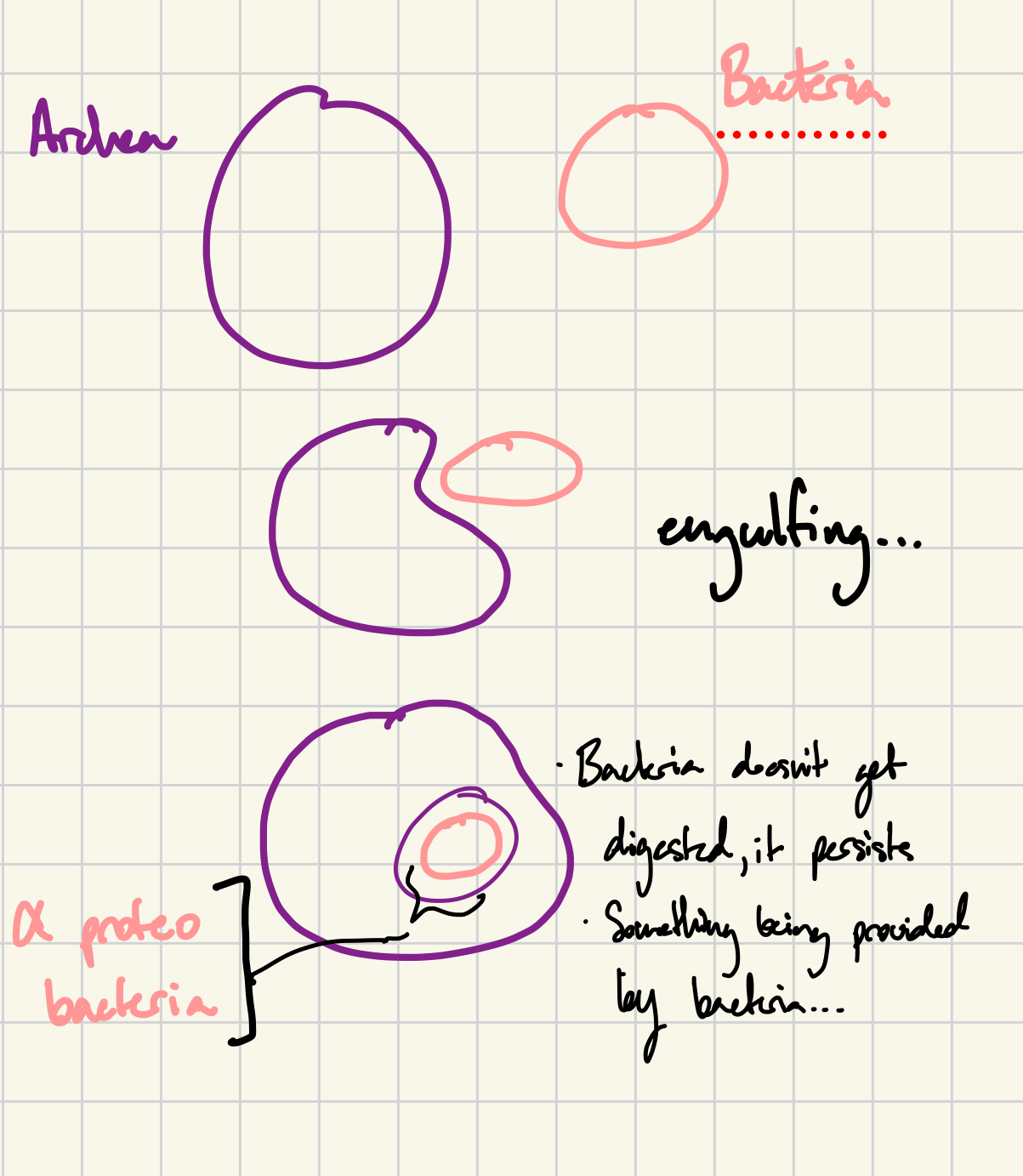BI 164 Final Exam- Endosymbiosis Theory
1/26
There's no tags or description
Looks like no tags are added yet.
Name | Mastery | Learn | Test | Matching | Spaced |
|---|
No study sessions yet.
27 Terms
Prokaryote
Lack a membrane bound nucleus and unicellular, virtually all bacteria and archaea
Eukarya
Organisms that have cells with membrane bound nuclei
Binary fission
A type of asexual reproduction where a single parent cell divides into two identical daughter cells, used by bacteria and archaea
Lateral gene transfer
Transfer of DNA between 2 species (bacteria/archaea)
Bacteria/archaea take DNA from environment (another strain)
Virus or agent can move DNA among species
Direct physical contact between cells → exchange of DNA and results in genetic recombination
ex: Cyanobacteria
2 keys points about bacterial “sex” - lateral gene transfer
One way transfer of genetic material instead of an exchange between individuals
Instead of involving all genes present, transfer is limited to a plasmid or small portion of the genes in the main chromosome
Protist
All eukaryotes that are not land plants, fungi, or animals
Logical to conclude the first eukaryote was a single-celled organism
Yes, virtually all bacteria and arches are unicellular and so are most subgroups of major lineages of eukaryotes
Mitochondria
Organelles that generate ATP aerobically → energy
Endosymbiosis Theory
Mitochondria originated when a bacterial cell took up residence inside another cell about 2 billion years ago
Symbiosis
When individuals of 2 different species live in close and prolonged physical contact
Endosymbiosis
One species lives inside another

Evidence of Endosymbiosis Theory
Several similarities between mitochondria and chloroplasts
Mit. and chond. DNA match more closely with bacterial DNA
M and C have their own DNA, mRNA, and ribosomes
M and C have a plasma membrane → similar to those in bacteria
M and C divide/replicate by binary fission (same as bacteria)
Mitochondria and chloroplasts have double membranes
Genes from M and C have moved to eukaryotic genome (lateral gene transfer)
Mitochondria similar in size to a-proteo bacteria
Extension of Endosymbiotic Theory
Eukaryotic chloroplasts originated when a protist engulfed a cyanobacterium
Significance ~ Why do endosymbiotic systems persist? Adaptive function?
Bacteria are protected
Host energy capacity (host cells bigger, faster, capture more prey…)
Chloroplasts → only need sunlight to produce energy
Negative effect on host (ex. evolution of immunity)
Why loose a mitochondria?
Organism lives in an area with low oxygen, and mitochondria are expensive to maintain
Result of endosymbiosis
2 membranes in chloroplasts and mitochondria
2 vs 4 membranes on a tree…
Indicate that secondary symbiosis event occurred, traits that evolved after secondary symbiosis
Secondary endosymbiosis
Eukaryotic non-photosynthesizing cell engulfs a photosynthetic eukaryotic cell and retains chloroplasts

Any cell that has a mitochondria…
= eukaryotic cell (not archaea ancestor)
2 different forms of multicellular development
Clonal development
Aggregative development
Clonal development
Multicellularity arises when cells stay connected or encased with one another after division from multicellular spore or zygote
→ *cells stay together*
Aggregative development
Cells that live independently for most of their life, episodically associate to form a multicellular organism
→ *cells come together*
Fitness effects (good/ bad) of multicellularity:
(+) specialization of cells, multitasking
(+) longevity → one cell dies, organism still remains, allows for apoptosis
(+) lower surface area: volume → takes on different shapes, different interaction with outside world
(-) how to move/transport when larger
2 different types of multicellularity:
Simple multicellularity
Complex multicellularity
Simple multicellularity
Simple shapes, (filaments, cluster, sheet of cells… 1 layer thick), arise via mitotic division
cell adhesion
multicellular state can persist
minor specialization: somatic and germ cells
→ aggregative and mostly clonal
Complex multicellularity
Cells with persistent multicellularity and:
Cell adhesion
Intercellular communication
Differentiation of tissue
Programmed cell death
3D structure, same cells don’t interface with environment
→ only clonal development
Include:
Animals
Fungi
Plants
Red/brown algae